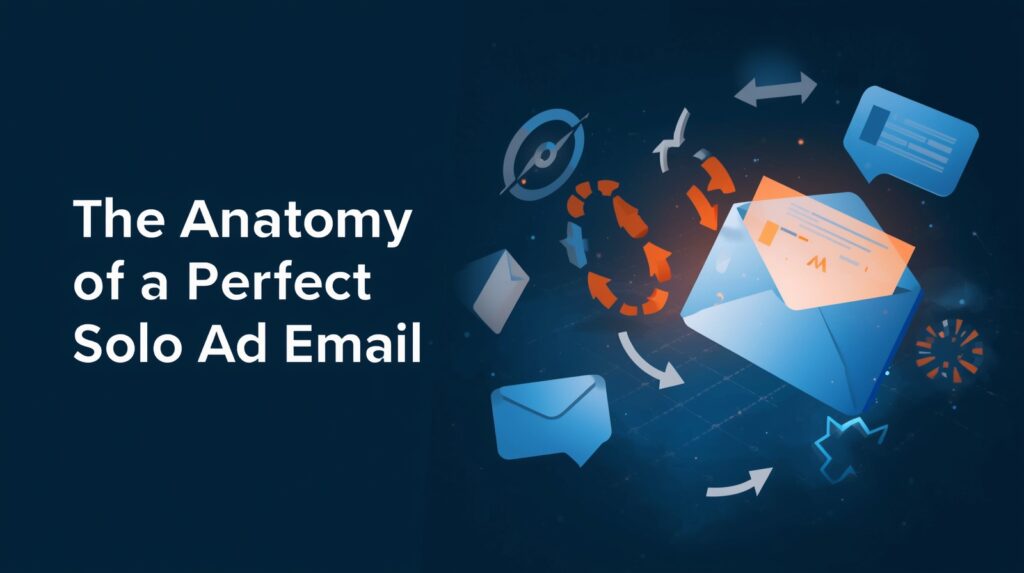
Learn how to craft the perfect solo ad email that grabs attention, builds trust, and converts clicks into leads. Discover the exact structure, psychological triggers, and real examples that make high-performing solo ads work in 2025.
Table of Contents
Why the Email Itself Makes or Breaks Your Solo Ad
Your solo ad email isn’t just a message — it’s a mini sales funnel in one paragraph. It has to grab attention, build curiosity, and drive an instant click.
While the solo ad vendor provides the list, your email copy determines how much that list responds. If you’ve ever wondered why some ads get 50% opt-ins while others flop, it’s almost always the email structure.
Subject Line: Your 3-Second Conversion Hook
Your subject line decides whether your email gets opened — or ignored.
Tips for better subject lines:
Keep it curious but clear, not clickbaity.
Use numbers, timeframes, or outcomes (“Earn $100 a Day in 3 Steps”).
Test personalization (“Hey {Name}, This Changed My Funnel”).
Example:
✅ “How I Got 537 Leads from a $100 Solo Ad (No FB Ads!)”
❌ “Get Rich Now!!!”
The Opening Line: Build Connection in Seconds
People read emails like conversations. Start warm, casual, and relatable — not like an ad.
Example:
“I don’t usually send emails like this, but I stumbled on something that made me rethink how solo ads really work…”
This kind of line disarms skepticism and opens a story loop — the perfect start for curiosity-driven readers.
The Story Hook: Turn Curiosity Into Desire
A short story or relatable experience builds emotional connection.
Explain how you discovered or used what you’re promoting.
Example:
“After wasting $300 on useless clicks, I finally found a vendor who sent me buyers — not just subscribers. The difference? My email copy.”
Stories transform promotions into personal insights — and that’s what sells.
The Offer: Focus on the Benefit, Not the Product
Don’t list features. Focus on what happens after they click.
Frame it as a solution or shortcut:
“This short video shows exactly how I turned cold clicks into hot leads — even with a small budget.”
Pro tip: Keep only one clear CTA (call-to-action).
Buttons or links like:
👉 “Watch the video now”
👉 “Grab your free funnel template here”
Formatting: Make It Skimmable and Click-Friendly
People scan emails, not read them word-for-word.
Formatting tips:
Use short sentences & paragraphs (1–3 lines max).
Add emojis sparingly to guide eyes 👀.
Bold or underline key benefits.
Include one clickable link every 2–3 paragraphs.
This improves CTR (click-through rate) by up to 30% in most campaigns.
The Psychology: Why This Structure Works
Each section serves a psychological trigger:
Subject line → Curiosity
Opening → Trust
Story → Emotion
Offer → Desire
CTA → Action
This is the AIDA formula (Attention, Interest, Desire, Action), modernized for solo ads. When you follow it, your emails start to feel natural, persuasive, and human — not like another pitch.
Conclusion
A perfect solo ad email is more than catchy words — it’s a psychological journey designed to move a stranger from curiosity to action.
If your subject line hooks, your story connects, and your CTA feels like a natural next step — you’ll get more clicks, more leads, and more consistent ROI.
Remember: It’s not about shouting louder; it’s about saying what matters most to your reader.
FAQs
Short and punchy — ideally 150–250 words. Enough to create curiosity, not explain everything.
Yes! Adding a name tag or niche-specific reference increases open rates by up to 26%.
1–3 links maximum. Repetition helps, but too many links look spammy.
A few emojis can help scanning, but avoid images — plain text feels more personal and performs better.
Test new angles or subject lines every 3–5 campaigns to avoid “list fatigue.”